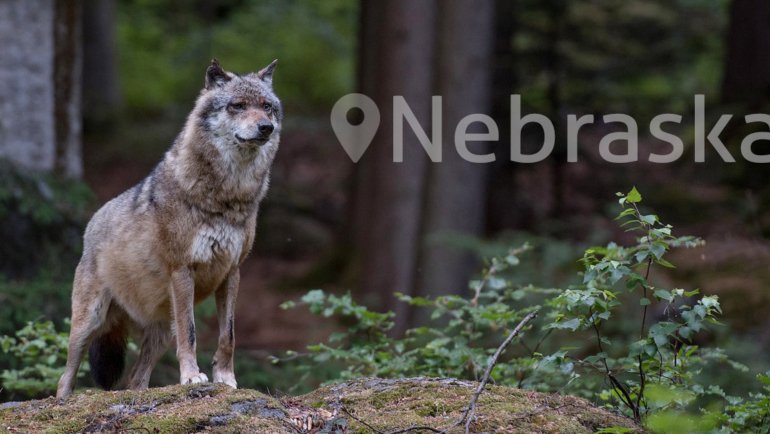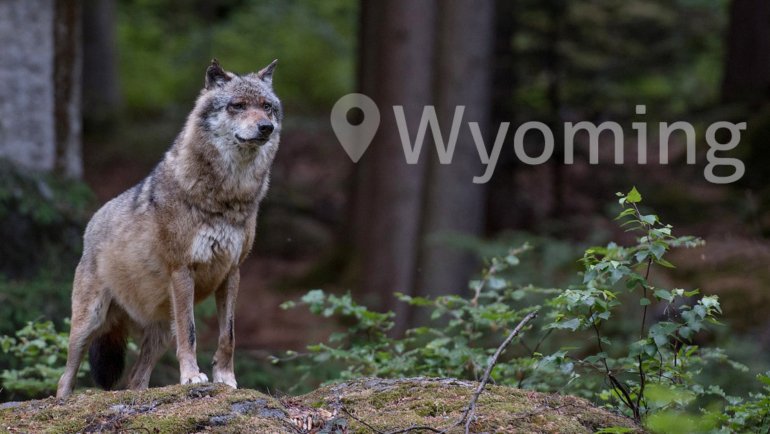Wolves are fascinating creatures, known for their adaptability to a variety of habitats around the world. From the icy tundras of the Arctic to the dense forests of North America and Europe, wolves have evolved to thrive in diverse environments.
One of the intriguing aspects of their survival skills revolves around how they cope with the harsh conditions of winter. Many animals hibernate to escape the cold, but what about wolves?
In this article, we will delve into the winter behaviors of wolves, addressing the common question of whether or not they hibernate, and exploring how they manage to survive in freezing temperatures.
What is Hibernation, Exactly?
Hibernation is a state of inactivity and metabolic depression in endotherms, commonly known as warm-blooded animals. During hibernation, an animal’s heart rate, body temperature, and respiratory rate drop significantly, allowing them to conserve energy and survive periods when food is scarce. This survival strategy is commonly observed in mammals such as bats, ground squirrels, and bears.
The animals that typically hibernate tend to have a few characteristics in common. They often have a body structure that is not well-suited to withstand cold temperatures, or they may have a diet that is scarce during the winter months. Hibernators usually build up a reserve of body fat during the warmer months, which they rely on to get through the winter.
Wolves, however, do not fit the typical profile of a hibernating animal. They have a robust build and a thick coat of fur to insulate them from the cold, and their social and hunting behaviors change to adapt to the winter season.
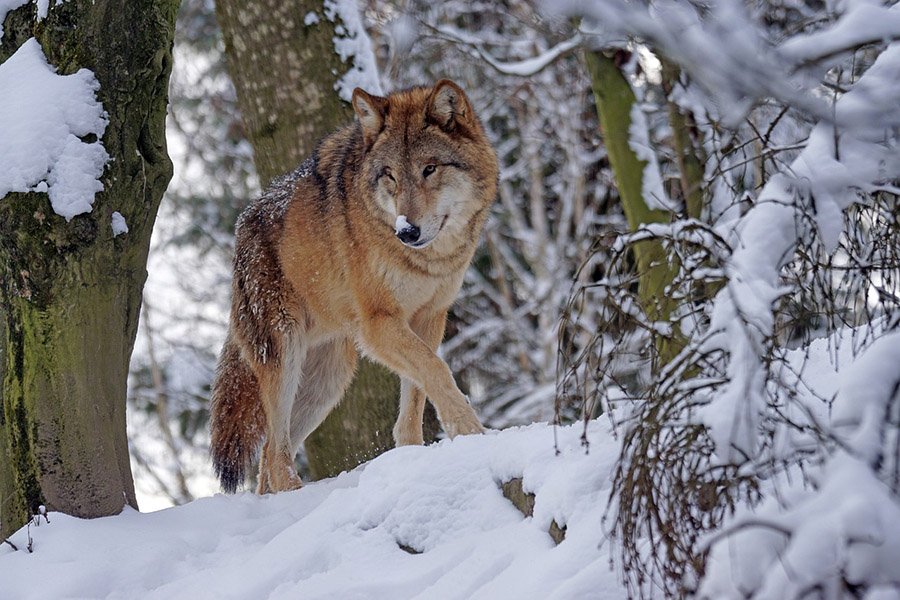
Wolves’ Winter Behavior: An Overview
When winter arrives, bringing with it freezing temperatures and snow, wolves don’t retreat — they adapt. Their thick fur becomes even denser, providing insulation against the cold.
Wolves are known to grow a winter coat that is made up of long, coarse guard hairs and a dense, insulating underfur, which helps to keep them warm in sub-zero temperatures.
Behaviorally, wolves become more active during the winter months. This is partly because their prey, such as deer and elk, are also more active, and the snow can help wolves hunt by slowing down these animals. The social dynamics of a wolf pack may also change, with wolves working together more cohesively to bring down prey.
In terms of territory, wolves may travel longer distances in search of food, but they are known to defend their territory fiercely, regardless of the season.
The harsh conditions of winter can strengthen the bonds within a wolf pack, as they rely on each other for hunting and protection. Communication, through howls, barks, and body language, becomes crucial as wolves coordinate their movements and hunting strategies.
Do Wolves Hibernate?
To answer the original question directly and clearly: wolves do not hibernate. Unlike bears, which experience a drop in metabolism and can sleep for months on end, wolves remain active, alert, and responsive throughout the winter. Their physiological and behavioral adaptations enable them to thrive in cold climates, making hibernation unnecessary.
One of the key reasons wolves do not hibernate is their diet. Wolves are carnivorous predators, and they need to hunt regularly to sustain themselves.
During the winter, their prey is still active, and wolves take advantage of this, often hunting in packs to bring down larger animals. Their strong, powerful limbs and padded paws are well-adapted for traversing snow-covered terrain, allowing them to cover large distances in search of food.
Furthermore, the social structure of a wolf pack plays a role in their winter survival. The pack operates as a tight-knit unit, sharing the responsibilities of hunting, protecting territory, and caring for any pups. This social support system is crucial for survival in harsh conditions and is a key reason why wolves do not need to hibernate.
In summary, wolves are well-equipped to handle the challenges of winter. Their physical adaptations, combined with their social behaviors and hunting strategies, allow them to remain active and survive even in the coldest of climates.
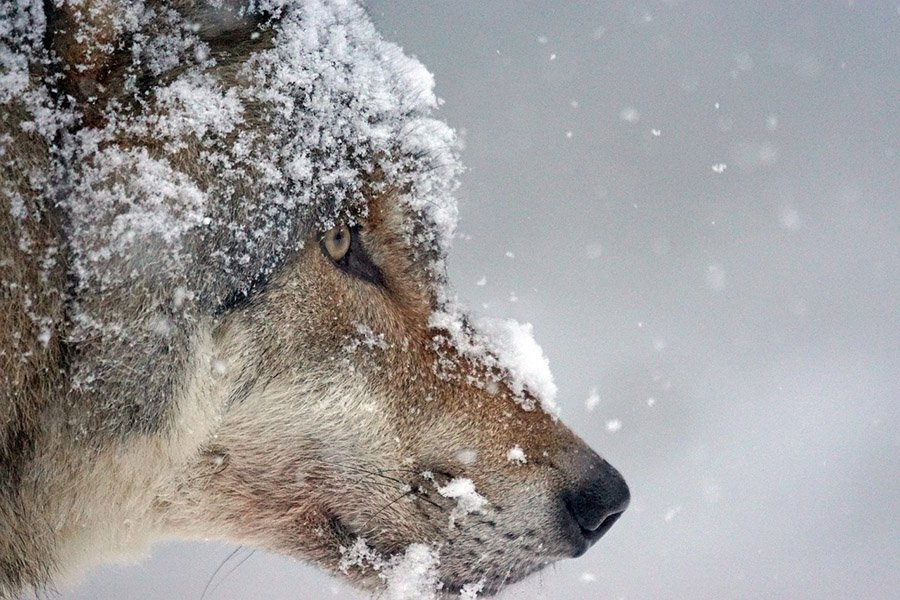
How Do Wolves Survive Harsh Winter Conditions?
Wolves are remarkable creatures, specially adapted to thrive in some of the coldest environments on Earth. Their survival during harsh winter conditions is a testament to their resilience and the effectiveness of their adaptations.
Physical Adaptations: Wolves possess a range of physical features that enable them to withstand freezing temperatures. Their fur, which thickens during the winter, provides essential insulation. The fur also has oils that help repel water, keeping them dry in snow and rain.
Wolves have large paws with fleshy pads and claws that provide traction on slippery surfaces, and their paws distribute their weight evenly, allowing them to walk on top of snow rather than sinking into it.
Hunting Strategies: Wolves are strategic hunters, and they alter their approach during the winter to accommodate the changing conditions. They tend to hunt in packs, which increases their efficiency and success rate.
Large animals, weakened by the harsh conditions, become primary targets. Wolves are known to travel great distances in pursuit of prey, showcasing their incredible endurance.
Social Structure: Living in packs not only aids in hunting but also provides wolves with social support. The pack works together to protect territory, share food, and care for the young.
The alpha pair leads, making crucial decisions for the group. This social structure is vital for survival, as solitary wolves face far greater challenges during winter.
Comparisons with Other Winter Behaviors in the Animal Kingdom
Wolves’ active lifestyle during winter stands in contrast to the hibernation habits of some other animals. Bears, for instance, retreat to dens and enter a state of torpor, significantly reducing their metabolic rate. Bats and hedgehogs also hibernate, conserving energy when food is scarce.
Some animals, like the Arctic fox, change their fur color to blend in with the snowy environment, aiding in both hunting and avoiding predators. Others, like squirrels, store food in preparation for winter, relying on these caches when fresh food is not available.
Reptiles and amphibians often brumate, a state similar to hibernation but less intense. They remain semi-active, and their metabolic processes slow down, but they do not enter a deep sleep.
In summary, wolves’ ability to remain active and hunt makes them unique in the animal kingdom, showcasing a different set of adaptations for winter survival. Their resilience, social structure, and physical features all play a role in helping them navigate the challenges of cold climates, ensuring their survival and success as a species.
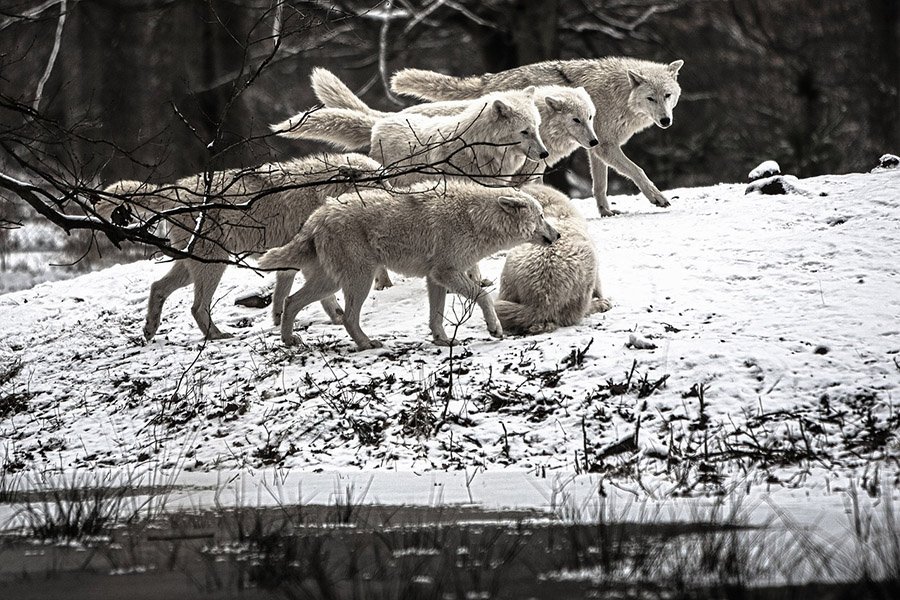
The Impact of Climate Change on Wolves’ Winter Behavior
The ever-changing dynamics of our planet’s climate have profound effects on numerous species, and wolves are no exception. As winters become less predictable and more erratic due to climate change, wolves face new challenges that could alter their behavior, hunting patterns, and overall survival strategies.
Changing Winter Conditions: Reduced snowfall, warmer temperatures, and changes in prey availability can impact wolves’ ability to hunt and navigate their territories. The snow’s insulating effect, which keeps the ground warmer than the air during deep winter, could be lessened, potentially exposing wolves to harsher conditions.
Adaptation and Conservation: In response to these changes, conservationists and wildlife biologists are actively studying wolf populations to understand better how they are adapting to climate change.
Protected areas, wildlife corridors, and other conservation strategies are being implemented to ensure wolves have the habitat and resources necessary to thrive. Public education campaigns are also crucial to garner support for wolf conservation and address any misconceptions about these misunderstood creatures.
Frequently Asked Questions
Do wolves hibernate during winter?
No, wolves do not hibernate. They remain active throughout the winter, hunting and defending their territory.
How do wolves stay warm in the winter?
Wolves have thick fur that provides insulation, and their large paws help them travel on top of the snow. They also rely on their pack for social support and shared body warmth.
What do wolves eat during winter?
Wolves continue to hunt large game during winter, and they may also scavenge on carcasses. Their ability to travel long distances aids in their search for food.
Are wolves affected by climate change?
Yes, changing winter conditions due to climate change can impact wolves’ hunting patterns, behavior, and overall survival. Conservation efforts are crucial to helping them adapt.
How do wolves’ winter survival strategies compare to other animals?
Unlike animals that hibernate or migrate, wolves remain active during winter, relying on their physical adaptations and pack structure to survive.
Can wolves survive in extreme cold?
Wolves are well-adapted to cold climates and can survive in extreme cold, but they are not immune to the challenges that severe weather can pose.


